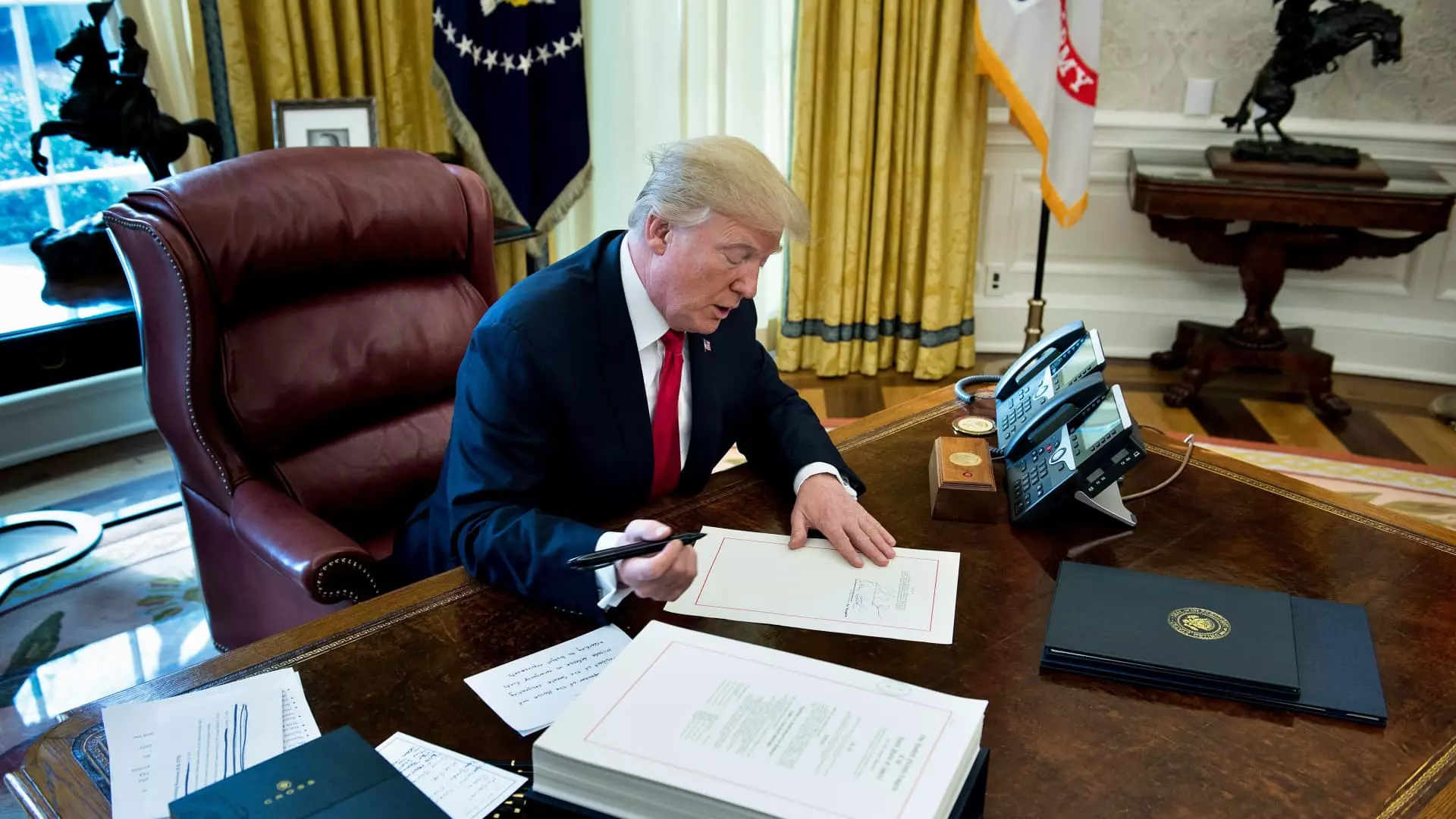The impending changes in the United States tax legislation set for 2025 epitomize the unpredictable nature of the country’s fiscal policy. As Congress gears up to negotiate potential adjustments to the economic plan of President-elect Donald Trump once more, there are parallels to draw from the 2017 Tax Cuts and Jobs Act (TCJA). This article explores what investors and taxpayers can glean from past policy maneuvers while looking forward to a period marked by uncertainty.
When Donald Trump ascended to the presidency, one of his administration’s hallmark achievements was the TCJA, which introduced notable reforms for both individual taxpayers and corporations. The law’s core ambitions centered around stimulating economic growth, significantly reducing tax rates, and providing substantial provisions like increased standard deductions and greater tax credits for families. With this sweeping change came a promise that many of these benefits could face expiration in 2025 unless further action was taken.
For investors, this situation presents an important lesson in remaining vigilant and adaptable. Many taxpayers embraced strategies before the new law took effect—such as front-loading deductions related to property and state income taxes—primarily to take advantage of temporary tax cuts. It highlights the importance of staying informed about existing tax structures, as well as understanding potential adjustments on the horizon.
As we approach the critical year of 2025, the question on everyone’s minds is: what changes will Congress enact? With a major portion of Trump’s tax cuts set to expire, including lower tax brackets and increased deductions, uncertainty looms heavy over tax planning. Experts assert that individuals should refrain from making drastic tax-related decisions until final legislation is secured. The characteristics of the upcoming negotiations, particularly in a carefully divided Congress, exacerbate the unpredictable nature of fiscal policies.
Ryan Losi, a seasoned CPA, emphasizes the need to trust established laws over potential changes. His advice encourages taxpayers, especially those with elevated estates, to consult with legal professionals in anticipation of possible modifications to the estate tax exemption. In essence, the combination of foresight and preparation could be pivotal in effective tax planning as legislative changes unfold.
To ensure they are best positioned for whatever may come, many taxpayers should consider re-evaluating their current tax strategies. In 2017, as the TCJA was passed under a deadline-driven environment, tax professionals faced tremendous pressure to navigate the complexities rapidly introduced into the system. This almost frenetic pace exemplifies why taxpayers and their advisors should have contingency plans in place, especially considering that the TCJA’s key benefits could sunset after 2025.
Additionally, the notion of accelerated strategies revisited in 2017 continues to resonate. The proactive approach many adopted by prepaying deductibles may serve as a model for recalibrating one’s tax positions in the face of looming changes. As the 2025 deadline approaches, consideration of tactics that capitalize on existing tax laws may provide strategic advantages.
The intricate dance of political dynamics is ever present in discussions on tax reform. The process of reconciliation, which bypasses the filibuster and allows the majority party to enact budgetary decisions, will likely play a crucial role in shaping the tax landscape. Will Republicans align with Trump’s vision for the continuation of the TCJA benefits, or will shifts in ideology lead to different priorities? These questions are vital in framing expectations.
While some speculate that a Republican-led Congress may favor extending provisions like the higher estate tax exemption, unpredictability remains a significant factor. Historical precedents underline the possibility of last-minute legislative shifts leading to unexpected tax legislation outcomes. As expressed by Losi, the potential for “another Trump Christmas present” resounds as an analogy for future surprises that may steer taxpayer strategies.
To summarize, approaching 2025 calls for an emphasis on vigilance among taxpayers and investors alike. The lessons from Trump’s 2017 TCJA indicate the necessity of adaptable tax strategies and the importance of remaining engaged with legislative developments. Whether individuals prioritize proactive approaches to tax planning or seek to keep their options open, the ultimate goal remains the same: ensuring financial health amid an evolving and unpredictable tax landscape. Awareness and foresight are not just advantageous; they are essential components for navigating the complexities that lie ahead.

